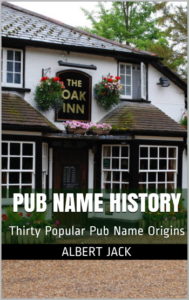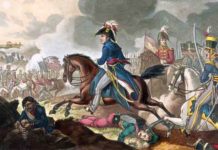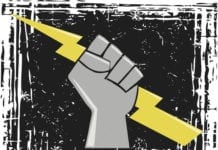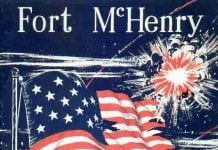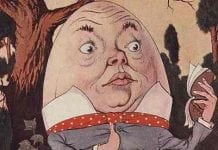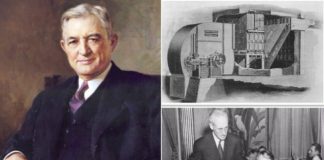Although many traditional pub names came about hundreds of years ago and need a bit of explaining, the world’s most famous bar is called, quite simply, Harry’s Bar, which sounds straightforward enough but there’s a quite a story behind it even so.
The name has caught on, too: every Harry’s Bar you walk into throughout the world derives its name from the original Harry’s Bar, on Calle Vallaresso near St Mark’s Square in Venice.
First opened in March 1931 by Giuseppe Cipriani, Harry’s Bar became an instant success when Giuseppe’s imaginative cocktails proved popular with young Venetians. However, with the outbreak of the Second World War, the fascist authorities prohibited the use of English names and Giuseppe was forced to change ‘Harry’ to ‘Arrigo’ (the Italian version of the name).
Then, in 1943, the bar was closed to the public and became a mess hall for German and Italian officers. At the end of the war, as Europe slowly returned to normal and people began rebuilding their shattered lives, Cipriani reverted to the original name for his watering hole.
Harry’s Bar once again opened its doors to tourists and locals alike, immediately becoming popular with the likes of Noël Coward, Humphrey Bogart, Charlie Chaplin and the legendary film director Orson Welles, who placed the same order every time he visited, two bottles of champagne, drinking them both.
But it is largely thanks to the writers among the clientele that Harry’s Bar began to establish an international reputation, helped in particular by Ernest Hemingway, who had his own table in one corner and who immortalized the bar in his novel Across the River and into the Trees (1950), not to mention the short story ‘In Harry’s Bar in Venice’.
It was Hemingway who came up with the name for one of Cipriani’s now famous cocktails, the Montgomery, after the barman explained to the writer the recipe was fifteen parts gin and one part vermouth.
Hemmingway noted that the proportion of gin to vermouth sounded like the odds General Montgomery once faced during the recent war, still managing to win despite being outnumbered by fifteen to one.
Truman Capote, also a regular customer, spoke lovingly of the hot shrimp sandwiches, a Harry’s Bar delicacy. When another regular, the opera-loving Countess Amalia Nani Mocenigo, complained, in 1950, that her doctor had ordered her to eat only raw meat, Cipriani responded by serving a dish of thinly sliced beef with a light mayonnaise and lemon sauce topped with Parmesan cheese.
Observing that the dish looked like a painting by Venetian artist Vittore Carpaccio, who favoured the colours red and white in his work, Cipriani called it ‘Carpaccio’ and the dish was subsequently served in restaurants all over the world. Since the Second World War, the reputation of Harry’s Bar has continued to spread and it serves a growing clientele, from celebrities and princes to lowly serfs like you and me.
In 2001, in recognition of its status, the Italian Ministry for Cultural Affairs declared the Harry’s Bar in Venice a national landmark.
Which brings me to the obvious question: who was Harry? During the roaring 1920s a rich American family decided to pack off one of their number to Europe in a bid to curb his enthusiasm for drinking.
In 1929, in the care of his aunt and her Pekingese pooch, Harry Pickering moved into the Hotel Europa in Venice to begin his period of rehabilitation but, since his aunt liked a drink or two herself, the three of them idled most of their days at the hotel bar, at that time being run by twenty-nine-year-old Giuseppe Cipriani, who later noted that any small bar could have made a decent profit just out of Harry and his aunt alone.
Quite what possessed the family to send a young man to Italy to curb his drinking habits is anybody’s guess, but within a few months the pair argued, the aunt flounced out, and Harry found himself alone in the city without the funds to pay even his drinks bill. Instead, the young man sat alone in the bar, gazing out of the window, until one day Giuseppe asked him what his problem was.
On learning of the lad’s plight, the barman chose to ignore any previous experience of lending a customer money – cash and customer invariably never to be seen again – and handed over his life savings of 10,000 lire so that Harry could have one last drink with him, pay his bills and book a boat home to Boston.
Giuseppe was soon reading in the newspapers about the stock market crash in America of October 1929 and the subsequent Great Depression that crippled the US economy. As the months passed the barman began to give up hope of ever seeing his money again, until one day, in February 1931, Harry strolled back into the Hotel Europa and placed 10,000 lire in cash on the bar, with the words: ‘Here you are – thanks for the money.’
The young man then pulled another 30,000 lire out of his pocket and handed it over to the astonished barman, saying: ‘And now you can open a bar of your own.’ Giuseppe Cipriani and Harry Pickering opened the doors to Harry’s Bar on 13 May 1931, and if as many customers who claim to have walked through the door on that day had actually done so, then, as Cipriani himself later declared, ‘I would have had to have a bar the size of St Mark’s Square.’ – Albert Jack
Albert Jack AUDIOBOOKS available for download here
